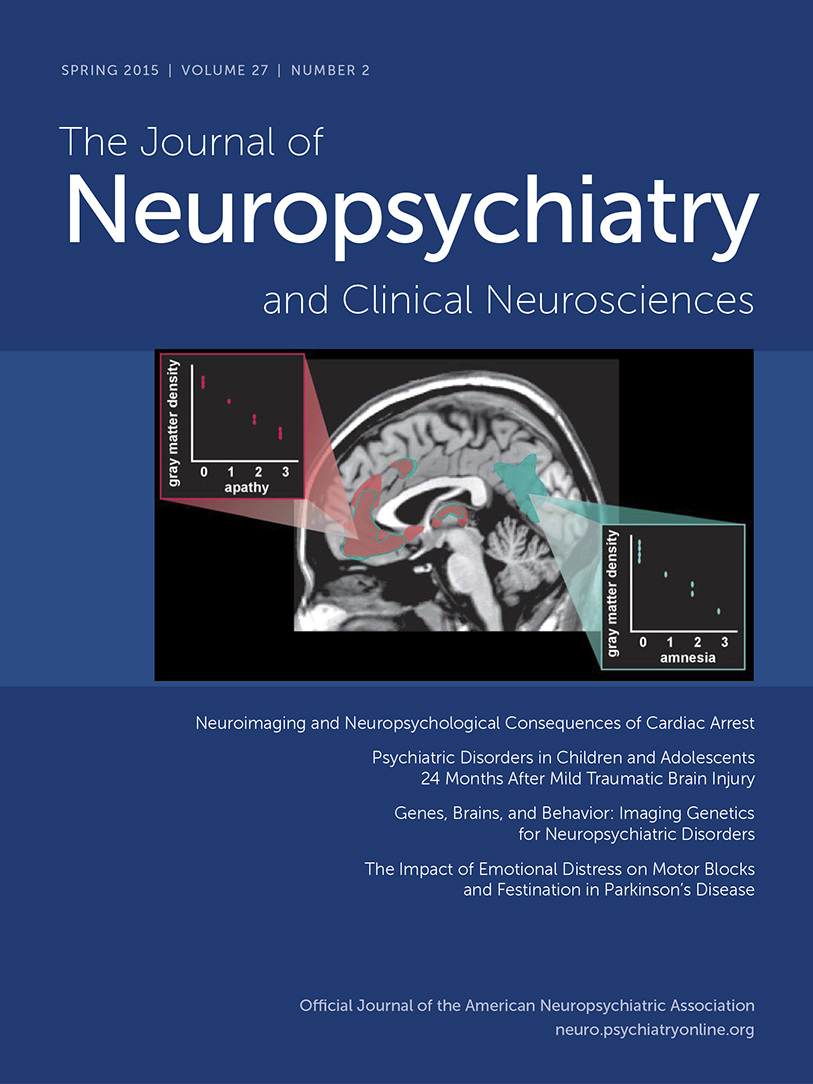Negative Symptoms in Neuropsychiatric Systemic Lupus Erythematosus
To the Editor: Negative symptoms of schizophrenia cause impairment of daily function. Though atypical antipsychotics are considered a treatment option, the management of negative symptoms is a challenging issue. Here we report a case of neuropsychiatric systemic lupus erythematosis (NPSLE), who manifested with negative symptoms and showed good response to cyclophosphamide.
Case Report
“Ms. W,” a 42-year-old woman, was admitted to a psychiatric ward for a long duration of time because of negative symptoms. Hebephrenic schizophrenia was diagnosed at age 17. Treatment with olanzapine and zotepine did not show a benefit to negative symptoms. At age 41, she was found to have a skin rash over the lower limbs, and autoimmune-related leukocytoclastic vasculitis was suspected by the dermatologists. A further workup disclosed an oral ulcer, positive antinuclear antibody, medium titer of anticardiolipin antibody, low complement component 4 level, positive result in the direct Coomb test, and elevated alanine aminotransferase level (198 U/L). The presentations were compatible with systemic lupus erythematosus. Under the suggestion of a rheumatologist, cyclophosphamide 500 mg pulse therapy was performed once; prednisolone and hydroxychloriquine were also prescribed. The rash and hepatitis resolved, and we accidentally found that her negative symptoms also subsided (negative symptom score of the Positive and Negative Syndrome Scale [PANSS] reduced from 35 to 23).
However, 3 months later, she again showed a markedly impaired self-care ability, despite continence of zotepine 300 mg/day. We rechecked her autoimmune profiles. An elevated alanine aminotransferase level (186 U/L) was found, and single-photon emission computed tomography (SPECT) scans showed hypoperfusion at the bilateral temporal, frontal, and left parietal lobes. Therefore, a flare-up of NPSLE was suspected. Within several days after cyclophosphamide pulse therapy, she asked to join activities spontaneously, and the interaction with other patients markedly increased. The negative symptom score of PANSS decreased from 40 to 25. In the following 3 weeks, without adjustment of psychotropic agents, she could maintain social interaction and fair daily function.
Discussion
Until the development of dermatological and hepatic problems, the manifestations of Ms. W were similar to schizophrenia. However, the excellent response to immunosuppressants indicates that part of her psychiatric symptoms originated from NPSLE. Cognitive dysfunction, acute confusional state, anxiety disorder, mood disorder, and psychosis are possible symptoms/presentations of NPSLE.1 Paranoia and hallucinations affect 8% of patients with systemic lupus erythematosus.1 However, negative symptoms caused by systemic lupus erythematosus are seldom reported in the literature.2 To our knowledge, this is the first case report of NPSLE mimicking negative symptoms, with a reversible course from cyclophosphamide treatment.
The negative symptoms of Ms. W might be explained by frontal hypoperfusion shown in SPECT. The frontal lobe is one of the most common regions of lupus invasion in the brain.3 Therefore, the psychopathology involved with volition in subjects with NPSLE might be more frequent than anticipated. Whether these symptoms are usually responsive to immunosuppressants warrants further investigation.
This case reminds us that NPSLE may be manifested as negative symptoms. In this situation, improvement is possible using immunotropic agents. Essential laboratory studies are helpful for understanding the symptoms and arranging suitable management.
1 : Neuropsychiatric manifestations of systemic lupus erythematosus. Joint Bone Spine 2006; 73:639–645Crossref, Medline, Google Scholar
2 : Psychiatric symptoms in systemic lupus erythematosus: an update. Psychosom Med 1993; 55:219–228Crossref, Medline, Google Scholar
3 : Diagnostic value of single-photon-emission computed tomography in severe central nervous system involvement of systemic lupus erythematosus: a case-control study. Arthritis Rheum 2005; 53:845–849Crossref, Medline, Google Scholar



